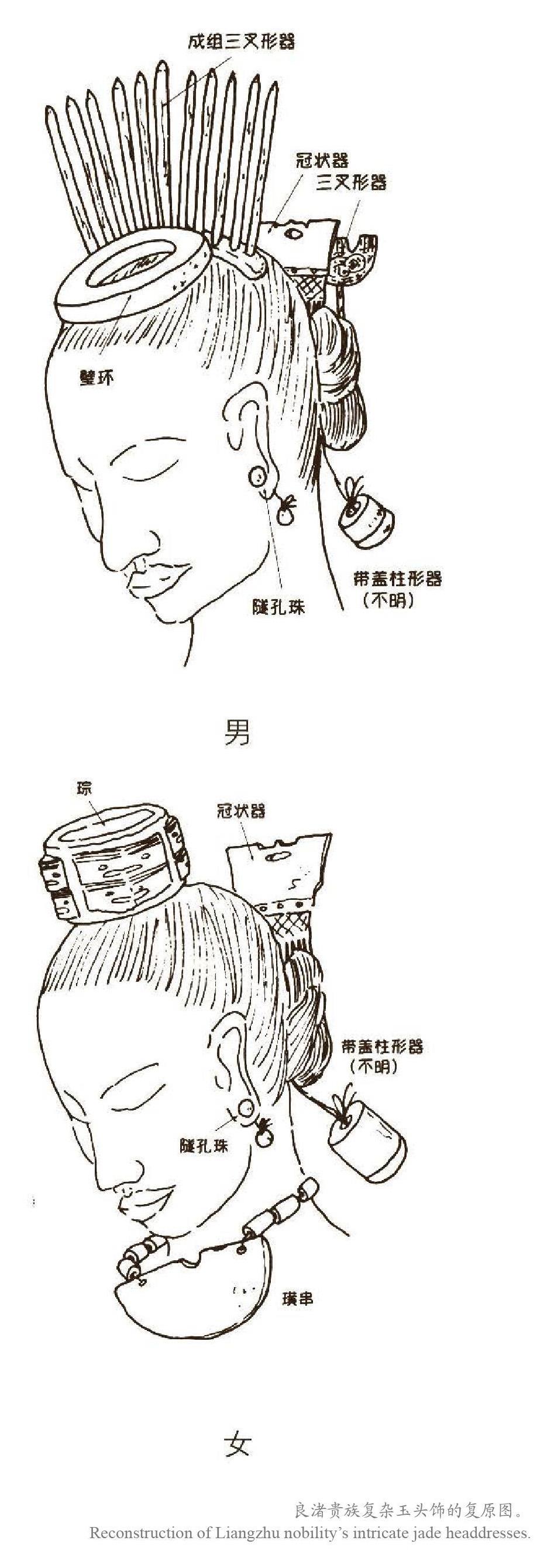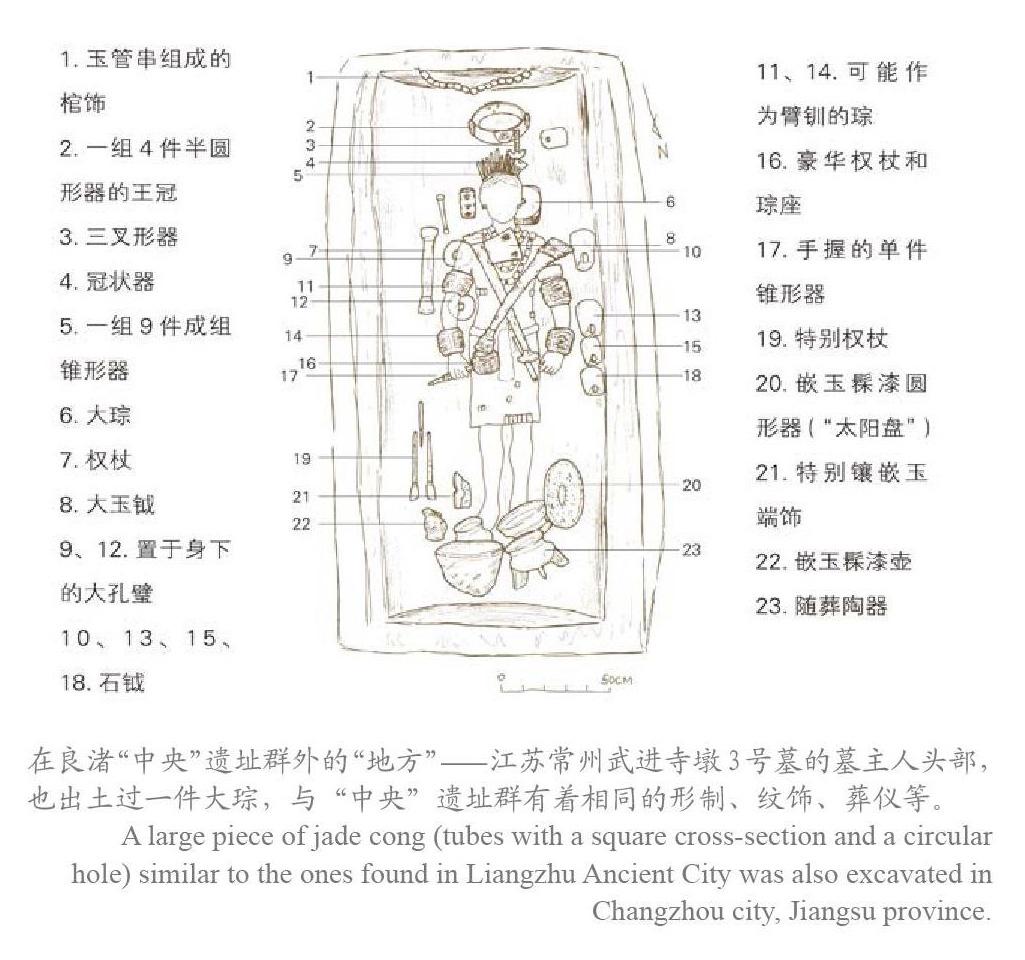记者带你看良渚
2021-07-29郑嘉励
郑嘉励



我最早读马黎的文字,在七八年前,她当时是《钱江晚报》入职不久的文化记者——关于考古发现的新闻报道文字,受许多读者欢迎,大家都说好看。好看的秘诀,无他,就是距离考古工地近些、更近一些。马黎勤奋,能吃苦,每有考古新发现,她总能第一时间赶赴现场。马黎低调、谦逊,待人接物,不卑不亢,有很好的“分寸感”,每有新发现,考古人也乐意告诉她。而她也总能在考古人客观、冷静甚至无喜无悲的讲述中,抓住一二个“新闻点”,将远古时代的物事,与现代的生活连接起来,穿越古今,透物见人。
“透物见人”是一种技能,也是境界,说来容易,践行实难。人文学科,必须见“人”,这是平常的道理。然而,不同学科的“人”,其实大不相同。文学关注的“人”,是“具体人”的生存状态和命运;历史学的“人”,既有司马光、岳飞等有名有姓的具体人,更有士农工商等“群体人”——毕竟都是人的政治、经济、文化或日常活动,转化为好故事,相对容易,大凡市面上稍畅销的人文书籍,十之七八,必为文史类读物。而考古学不同,面对古人的遗迹和遗物,并不直接见“人”,额外多出一道“透物见人”的拦路虎,尤其在未有文字以前的史前考古领域,既无具体人和具体事件,也无历史学范畴的“群体人”,所指之“人”通常是文化人类学等社会学科范畴的“抽象人”。如何将远古时代的片段遗迹、坛坛罐罐的碎片,拼接出有头有尾的故事,继而与现代人的情感、趣味、思想建立连接,那就格外艰难。当然,我们也大可以说,只有艰难的事情,才值得今天有志气的年轻人去做、去开拓。在我看来,马黎写作的意义,正在于此——她的新书《看见5000年——良渚王国记事》,以良渚文化考古历程、良渚古城格局、建筑、陵墓、良渚人的生业和日常生活以及良渚古城“申遗”始末为具体的描述对象,为我们提供了一个关于“良渚故事”的长时段的可靠记录和有效传播的样本。换言之,这本书为史前考古学术成果转化和公共传播领域的写作,提供了多种可能性,走出了一条新道路。
这条新道路,绝非一蹴而就,《看见5000年》正是作者长期摸索、反复试验后,逐渐形成的文本。
七八年前马黎的文字,并非如此,古人说“悔其少作”,事实上,一个有自我要求的作者,随着知识、趣味、价值观的改变或提升,恐怕连自己四五年前的文字都不能接受。马黎经常表达对早前文字的不满,正说明她是有追求的作者。她早年的新闻报道,有个特点,大量使用网络语言,或者采用“以今例古”“蹭热点”的叙述技巧,多以打比方的手法沟通古今,帮助读者理解古物。这是新闻和通俗写作的常用手法。网络语言、蹭热点的好处,显而易见,容易贴近读者,让今人对古人迅速产生“共情”;坏处也明显,因为热词、热点易冷,时过境迁,文章必然呈现出追求时效性的“速朽”特征。很多记者,坦然接受这一事实,新闻本就为读者提供快捷短期的资讯服务,没有人会把“新闻纸”当成藏之名山的专著来看待。然而,对有自我要求的作者而言,这种说法,只是皮相之谈。网络用语的过分使用,最大的问题,不在于时效性,而是它与作者的书写诚意、写作态度直接有关。
一个写作者,最难处理的关系,就是如何把握他与读者之间的距离感,即“分寸感”。一般而言,新闻记者,因为写作有明确的目标或定位,与读者的距离较近;独立作者、学者,与受众的距离稍远,为追求文本的严肃性和独立性,甚至会故意与公众保持一定的距离。
考古学如果是一门严谨的学术,新闻记者如果是一种严肃的事业,那么,从业者就应该是大家心目中定位的“学者”或“作家”。学者和作家,最可贵的品质,是“自由”与“独立”,有公信力的作者,其思考與表达应该是独立而严肃的,尽管谁都无法做到百分百的“独立”,但是文章的独立姿态,哪怕只是形式上的独立,其实也很重要。作者与读者之间的分寸感,如何拿捏?故作高冷,固然不好;刻意迎合,则尤不见佳。过分使用热词的作者,会让读者认为他是个“趋时”的人,甚至会为迎合部分追求娱乐化阅读的读者,轻易放弃自己的独立姿态。使用网络用语和蹭热点,也许确实会赢得更多的读者,但不足以补偿对文本公信力、对作者独立形象造成的伤害。
子曰“今之学者为人,古之学者为己”,我们也不妨说“记者之文为人,作者之文为己”。“记者”更多为读者考虑,“作者”在服务读者的同时更看重自我境界的提升。谁也无法明确说明,作者与读者之间的距离,究竟多远算远、多近算近。这种微妙的平衡感,决定于不同人的天赋和价值观,取决于优秀作者与一般作者的分别,不在文辞,而在于讲述的“分寸感”。
一个真正的写作者,谁又不是在“为人”和“为己”之间反思、摇摆和挣扎呢?
《看见5000年》最让我欣喜的,正是作者在“分寸感”上的进步,对一个认真的记者或作者——以文字为职业的人而言,没有比这更重要的了。她依然会用网络热词,偶尔也会打几个“以今例古”的比方,但点到为止,恰到好处,在内容的时效性和严肃性之间寻求平衡;在重大考古成果呼之欲出之际,她欣喜;在寻找良渚文化发现者施昕更先生坟墓未果之时,她伤感;在良渚古城申遗成功之后,抒情之余,又有大段的议论。无论如何,这一切都建立在扎实的叙述之上,这些文本又在抒情、议论和记录之间寻求平衡。读过《寻找施昕更》一章的读者,大概都对马黎扎实的采访和记录印象深刻,同时也会为一个生活在乱世的普通“爱国者”的人生而动容,说到底,都是理性与情感的平衡。
考古发掘的对象,本是古人日常生活、生产中的寻常物事,本质上,并无神秘可言。今人之所以感觉茫然或神秘,主要因为这些文物,脱离了历史的时空和脉络,游离于具体的人物和故事以外,变成了一颗颗不知来自何处、去向何方的流星。讲好考古故事,最大的困难,大多在于此——将残缺的、无序的遗物,尽可能准确地还原到具体的历史时空和背景中去,犹如天文学家通过演算,将脱轨的流星还原到它最初出现的地方。这也是我们判断一个学者学术能力和作者讲述能力的主要标准。汉唐以后的历史时期考古,有文献的辅助,将文物还原到具体历史场景的工作可能相对容易,而史前考古的挑战性显然大很多,它对讲述者叙述、抒情、议论的“分寸感”的要求高了不止一点点。我们对讲述者的能力评判,除了历史还原能力,另一个重要的维度,依然还是“分寸感”的拿捏,在记录、议论、抒情中的“分寸感”,无所不在。一流讲述者与二流讲述者的区别,不在于知识,而在于前者有更好的分寸感。《看见5000年——良渚王国记事》,在科学与人文、实证与推测、学术与生活,甚至在独立姿态与市场需求、象牙塔与大众口味之间平衡的“分寸感”,令人刮目相看,而这正是一流文化记者的标志。
良渚古城的發现和“申遗”成功,是数十年如一日的长期事业。马黎几乎跟踪采访了与良渚古城相关的所有重大考古发现,采访了与良渚考古、保护、利用领域相关的所有重要人物。她是良渚考古长期的旁观者、参与者、讲述者和传播者。作为记者,长期坚持,投身其中,为读者提供更好的文字;作为作者,努力写作,不停反思,可以做成一件事,也能变化气质,让自己成为一个更好的人。“记者之文为人,作者之文为己”,《看见5000年——良渚王国记者》正是一个记者和作者献给读者和自己的最好礼物。
(作者系浙江省文物考古研究所副所长。)
It was about seven or eight years ago that I first came across Ma Lis writings. Back then, she just joined the Qianjiang Evening News and was assigned the culture beat.
Mas archeological reporting has been quite popular with readers, the secret of which is none other than her closeness to archeological sites: whenever new archeological findings are excavated, she is always among the first on the scene. Invariably humble and with a sense of propriety, Ma is one of those journalists that archeologists are willing to talk to. In each of her stories, Ma is able to dig out one or two “news nuggets” without fail from the archeologists impartial and even unemotional account, weave the ancient items into contemporary life and see the real people behind.
The last part, a highly prized skill, is hard to come by in practice. It is taken for granted that humans should be the focus of humanities. However, in different subjects, the concept of “humans” or “people”, greatly varies. In literature, they are the destinies and living conditions of concrete human beings. In historiography, they are either specific figures, such as Sima Guang and Yue Fei, or a collective, i.e., a group of people, such as official-scholars, farmers, merchants. It is much easier to turn the experiences of these people into good stories. Thats why 70%-80% of popular books are from literature and history. On the contrary, a big obstacle stands in the way of making archeological findings compelling stories. More often than not, in ancient ruins and relics, especially for pre-historical societies with no written records, there are no “people” to speak of. What there are, are usually “abstract human beings” in the anthropological sense. How to connect the pieces and fragments of antiquity, solve the jigsaw puzzle, and more importantly, put together a story that is relatable and palatable to contemporaries is a quite difficult task.
Thats precisely what Ma Li has accomplished. In her book 5,000 Years: Chronicles of the Liangzhu Kingdom, Liangzhu Ancient Citys cultural archeological history, its layout, its architecture, its tombs, its people and the bid for it to become a “World Heritage” are all described in vivid details, a reliable record of the “Liangzhu Story” and a template for effective communication. In other words, Ma has found a new way in turning scholarly pre-historical archeological research into something that an average reader can easily understand.
But it was not achieved overnight; the book is a result of the authors many trials and tribulations.
Her writings back then were certainly unlike what they are today. Indeed, an aspiring author will most likely read his or her past writings with disdain, as their knowledge, tastes and even values change over time. Ma is no exception: she would often resent her immature early writings. One of the hallmarks of her reporting is the extensive use of internet slangs. Another is piggybacking on news events. These are common tricks in news reporting, the benefits of which are apparent: they are easily accessible to contemporary readers and can help them quickly, if superficially, understand the artefacts. The drawbacks are also obvious: internet slangs pop up as fast as they fade, and so do the news reports that rely heavily on them. Many journalists accept it with ease; after all, news is for the readers quick consumption, and no one will treat “newspapers” as classic books.
However, for Ma, and those like her, who aspires to be serious authors, writing in the conventional reporters way is far from enough. Whereas news reporters are expected to write in a much more accessible manner, in a serious field as archeology, authors are expected first and foremost to keep some distance away from the readers and write as independently, credibly and authoritatively, as possible.
It is this sense of distance that is the most difficult for an author to deal with, especially when presenting archeology to the general public. Too many internet slangs or whatever is in the vogue to pander to the current fad, the authors and their works may be perceived as too frivolous; too many jargons and too much academese, they risk turning away the readers.
What delights me most in 5,000 Years: Chronicles of the Liangzhu Kingdom is how the author has matured in handling the “distance”. Internet slangs are still used for sure, but only to the extent that they help aid the readers gain a deeper understanding of Liangzhu. When significant archeological findings were made, she was overjoyed; when the tomb of Shi Xingeng, the first archeologist who had discovered the Liangzhu ruins, was still nowhere to be found, she was dejected; when Liangzhu Ancient City became a UNESCO world heritage, her commentary, in addition to her emotional feelings, has made the part a captivating read. Indeed, in the chapter “Looking for Shi Xingeng”, Mas extensive interviews and thorough research undoubtedly impress; at the same time, her portrait of Shi, a patriot living in a period of turmoil, is destined to touch readers.
Science and humanity, empirical research and educated guesses, scholarly endeavor and daily life, in-depth investigation and plain language…the book has handled the balance deftly and Ma is now an indisputable first-class culture reporter and author.
Over the years, Ma has covered almost every major discovery of the Liangzhu ruins, and interviewed every major figure responsible for Liangzhus archeological survey, its protection and its bid to become the world heritage. She is a longtime observer, participant, narrator and communicator of the Liangzhu story. 5,000 Years: Chronicles of the Liangzhu Kingdom is the best gift that Ma the reporter and the author is now presenting to the readers.
